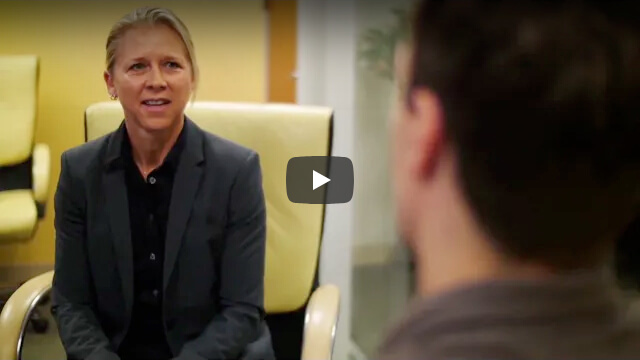Motorcycle Turn Signal Laws in California
Please be advised that the following topic is for informational purposes only and not a legal matter currently handled by our firm. If you need further assistance regarding this particular topic, you can contact your local Bar Association for a referral to an attorney who may be able to address your inquiry in more detail.
Are turn signals required for motorcycles in California? The short answer to that question is yes. However, there are a few notable exceptions to that general motorcycle turn signal law. Indeed, motorcycles were manufactured for generations without turn signals (as were automobiles) and motorists relied on hand signals to determine when, where, and if a rider was turning. As you can imagine, there were quite a few motorcycle accidents in California throughout the years caused by a rider’s failure to signal or a driver’s failure to see the signal and respond.
But if you ride an older machine, you don’t necessarily have to equip it with modern turn signals.
The law, as it’s written, takes these older bikes into account and makes exceptions for certain machines. So, determining if your personal bike actually needs turns signals or not can be a bit difficult. Let’s take a deeper look at the section of the California Vehicle Code’s motorcycle laws and see exactly what it says about turn signals on motorcycles in California.
The California Vehicle Code and Motorcycle Turn Signals
Turn signals on motorcycles in California are covered under Title 13 (Motor Vehicles) of the state code (specifically Division 2: Department of California Highway Patrol, Chapter 2: Lighting Equipment, Article 7: Mounting Requirements, § 699: Turn Signal Lamps).
This part of the California Vehicle Code that addresses motorcycle turn signal law explicitly states that:
- “Turn signal systems on motor vehicles shall consist of at least two single-faced or double-faced turn signal lamps on or near the front and at least two single-faced turn signal lamps on the rear.” That requirement extends to all motor vehicles operating on California roadways including motor-driven cycles.
- ”Front and rear turn signal lamps on motorcycles shall be at least 23 cm (9 in.) apart, except that front turn signals on motorcycles manufactured after January 1, 1973, shall be at least 40 cm (16 in.) apart.”
All modern motorcycles built or sold in America after 1973 should have California-compliant turn signals installed on them. You may run into a few exceptions to that rule—mostly custom bikes—but commercial manufacturers were compelled (through financial pressure if not legal requirements) to ensure their machines were compliant with these regulations.
Turn Signal Requirements for Motorcycles in California
Because they are considered by California law as motor vehicles, motorcycles built and first registered on or after January 1st of 1973 are required to have proper working turn signals on both the front and rear.
Bikes manufactured and registered prior to January 1st, 1973 are exempt from this statute and are not required to have turn signals.
California Laws About Using Your Turn Signals
It’s not enough that your modern motorcycle must have working turn signals in California. You must use those signals correctly. The California DMV rules and regulations require that motorcyclists signal at least 100 feet from the point at which you intend to turn or change lanes. That’s about 3 seconds prior to your intended turning spot when you are going 25 miles an hour — or a quarter of a city block. If you are riding a highway speeds, it is recommended in the California DMV Motorcycle Handbook that you initiate your turn signal a full five seconds before you reach your turning point.
Failure to signal in that time could result in tickets, fines, or even criminal charges in some cases. In addition, California police officers can use failure to signal a turn properly as a primary offense for which they can pull drivers over and look for other potential offenses.
However, the distance from the turn is not the whole story. Indeed, the law also includes a clause that states turn signals only have to be used if another motorist will be “affected” by the turn. So, for instance, if you’re preparing to make a left turn across a busy intersection that’s actively involved with traffic flow, then yes, using your turn signal is mandatory. Failure to do so could result in criminal fines (in addition to life-threatening injuries and financial liability if you cause a collision).
However, if you’re preparing to change lanes and there are no other cars around or if you’re making a right turn and the only other traffic in the area is in the oncoming lane, you may not be required to use your turn signal.
Unfortunately, the interpretation of this addition to California’s turn signal law has not always been consistent throughout the years. Indeed, this interpretational ambiguity creates a very complex and sometimes confusing legal situation when determining liability in a motorcycle accident case.
California Turn Signal Use Requirements and Civil Interpretations
The way in which civil courts and insurance companies in motorcycle injury cases interpret this legal requirement may differ significantly. Civil investigations into motorcycle accidents in California do not necessarily follow the direct interpretation of the California motorcycle turn signal laws as they are written. Indeed, such cases hinge upon determining liability or who is at fault for causing the accident. Following traffic laws, including the motorcycle turn signal law, is a factor, but not an automatic winner or loser when determining liability for an auto vs. motorcycle accident.
Insurance company representatives may argue that a motorcyclist’s failure to use their turn signal may have materially contributed to an accident even though the individual was not specifically required to use that turn signal under California Law. Such interpretations are open to contradiction but successfully defending a motorcyclist (and thus getting them the compensation they deserve after an accident) may require extensive investigation and presentation of other strong evidence against the other motorist.
OTHER CALIFORNIA MOTORCYCLE LAWS
Contributing to a Negative Stereotype
The bias that a motorcyclist faces after an accident is very real. It has been created by years of popular culture, exaggerated personal experiences, and anecdotal evidence that is not always 100% factual. The image of the reckless motorcycle rider who streaks through traffic like a rocket with complete disregard for other people who share the highway is something that’s hard for many people to get out of their heads. But what happens when that personal attitude has a direct impact on a real case?
Scientific studies have found that personal attitudes about motorcycle riders can very clearly affect the way a person feels about the rider, the accident, and the assigned responsibility (or fault) for the financial impact of that accident.
Indeed, when a who is essential to the financial recovery process—such as the responding police officer, a juror, or a plaintiff’s attorney—are biased by pre-existing notions about the recklessness or careless disregard of motorcyclists, the outcome can be very poor for victims in civil lawsuits and insurance negotiations.
That’s why motorcycle safety advocates and motorcycle accident attorneys in California always recommend that operators do everything within their power to present a positive image that directly confronts the negative one that lives in the biased mind.
Positive habits for confronting this bias include always riding within posted speed limits, leaving plenty of space between your bike and automobiles, and always using your turn signal.
Why You Should Use Your Turn Signals
A recent study found that failure to use turn signals was a leading cause of crashes in The United States—causing nearly 2 million accidents across the country. However, another study discovered that almost half of Americans regularly fail to use their turn signals correctly.
That’s nearly 2 million accidents nationwide that could be prevented through the correct use of turn signals. Indeed, correct use of turn signals (by motorcyclists and car drivers) can decrease the risk of one of the most common types of motorcycle accidents: the left turn motorcycle accident.
Motorists already have difficulty seeing and processing an oncoming motorcycle. The single headlight and the small size of the motorcycle confuses the eye of most motorists. This means the motorcycle approaches and then arrives in the motorists “danger zone” much more quickly than they believed it would. The driver typically says “he came out of nowhere.” or “he came so fast I didn’t even see him.” in 9 out of 10 motorcycle accidents that are caused by motorists. Turning on your headlight at all times of the day and using your turn signals well in advance of making a turn will help motorists see you sooner.
Any time you can reduce your likelihood of being in a motorcycle accident in California, you can dramatically decrease your risk of serious injury and death. Motorcyclists are nearly 30 times more likely to die in collisions between motor vehicles than car drivers or passengers. You’re also 10 times more likely to suffer serious life-threatening or life-altering injuries.
So not equipping your bike with turn signals or failing to use them is simply a recipe for disaster. It’s legally required (in most cases) and just makes sense.
However, if your bike does have turn signals and you used them properly and still ended up in a motorcycle accident in California, you may be able to hold the other driver legally liable (thus financially responsible) for your injuries. If that’s the case, get an experienced motorcycle attorney to review your case immediately.
Turns Signals Can Reduce Risk of Common Motorcycle Accidents
Correct use of turn signals (by motorcyclists and car drivers) can decrease the risk of several of the most common types of motorcycle accidents. Indeed, left turn collisions represent 36% of all fatal motorcycle accidents in The United States. Also, rear-end collisions (in which the motorcycle is struck from behind by another driver) represent 6% of all motorcycle crashes in America.
So, correctly using your turn signal (even when not legally required to do so) could theoretically reduce motorcycle accidents in California by 42%.
And any time you can reduce your likelihood of being in a motorcycle accident in California, you can dramatically decrease your risk of serious injury and death. Motorcyclists are nearly 30 times more likely to die in collisions between motor vehicles than car drivers or passengers. You’re also 10 times more likely to suffer serious life-threatening or life-altering injuries.
Not equipping your bike with turn signals or failing to use them is simply a recipe for disaster. It’s legally required (in most cases) and just makes sense.
Interpreting California’s Motorcycle Turn Signal Laws and their Financial Impact on Your Recovery
However, if your bike does have turn signals and you used them properly, you could still end up in a motorcycle accident in California. If you do, you may be able to hold the other driver legally liable and financially responsible for your injuries. However, as you can see, California’s turn signal laws have multiple loopholes and inherent ambiguity both of which a motorist’s attorney or insurance company could potentially use to their advantage. And if there is a clear financial benefit, it is a solid bet that they will use these exploitation methods to suit their needs.
Many times successfully winning an award or negotiating an adequate insurance settlement comes down to the interpretation of the law, the strength of the argument, and the quality of the evidence presented. If you find yourself fighting for financial compensation, get an experienced motorcycle attorney to review your case immediately.

